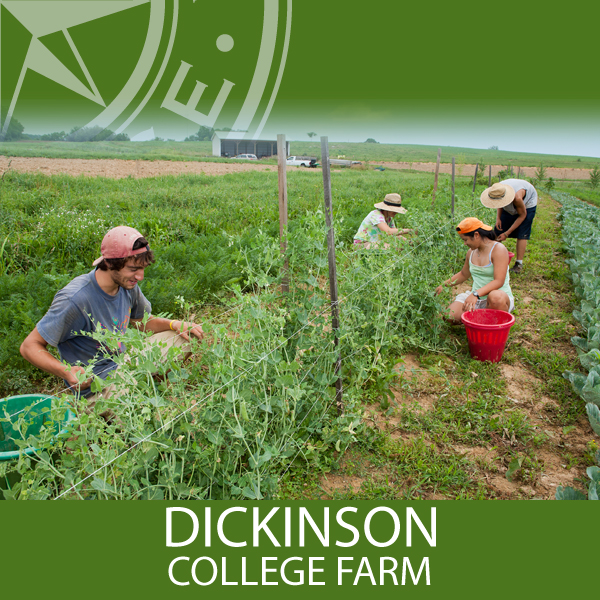Episodes
Farm Walking Tour Brochure This Dickinson College Farm Walking Tour Brochure is the companion to our audio walking tour. Created by Dickinson student farmers, this tour will guide you to key areas of the farm and provide helpful information about what you are seeing. The full tour takes about one hour to complete. To stay […]
Published 09/26/11
A. Kiosk Welcome to the Dickinson College Farm! This tour will guide you to key areas of the farm and provide helpful information about what you are seeing. The tour takes about an hour, if you are walking and following the tour at the farm, with each stop taking about seven minutes. The audio tour […]
Published 09/12/11
B. Teaching Garden and Student Research The Teaching Garden was created by Dickinson student Kaylin Campbell, Class of 2010. Kaylin sought to create a more convenient and instructional space to teach elementary school children about agriculture and sustainability. In addition to elementary education, the farm serves as a platform for sustainability education at Dickinson: from […]
Published 09/12/11
C. The Pond The pond is a man made construction that was created in 2008 to serve as a reservoir for irrigation purposes. It is strategically placed to collect runoff rain water from the fields. Download the entire audio walking tour on iTunes.
Published 09/12/11
1. The Yurts Inspired by the traditional Mongolian-style hut, the Yurts were built to serve as housing for the three six-month farm interns. These interns are either recent Dickinson graduates or members of the Multicultural Exchange for Sustainable Agriculture program, or MESA. Download the entire audio walking tour on iTunes.
Published 09/12/11
2. Livestock Sheep, Chickens, Black Angus Cattle From this location, you may or may not see our oldest livestock, the sheep. The Dickinson College Farm owns a flock of about ten ewes and raises lambs annually that are sold to the public. You may not see our sheep because we practice rotational grazing, which is […]
Published 09/12/11
3., 4. Native Pollinator Garden and Production Fields What varieties of fruits and vegetables are grown on the farm? What is our largest crop? As a certified organic agriculture program, the farm does not use synthetic pesticides or herbicides. Instead, insects are generally controlled biologically and manually. How do we promote biodiversity, provide additional habitat […]
Published 09/12/11
5. Compost Area The compost area is the fifth stop on our self-guided audio walking tour. As you look behind the greenhouses, you should see large mounds that look like mulch. What is compost? What makes up the farm’s compost? How do we ensure that the compost decays properly? Is it possible to compost meat […]
Published 09/12/11
6. Greenhouses and Solar Water Heating Welcome to Chihua, our largest and oldest greenhouse. What do we grow in our greenhouses? What are the important features of a greenhouse? How do we attract pollinators into the greenhouse? How do we keep the greenhouses warm year-round? Where is our solar water heater and how does it […]
Published 09/12/11
7., 8. Large Solar Array and Barn Funded by a grant from Energy Harvest in 2007, the array is a 2.25 kilowatt system that, on the sunniest days, provides about half of the electricity needs of the lower barn. Unlike the yurt solar array, which stores energy in batteries, this system is a grid-tied system. […]
Published 09/12/11
9. Future Prospects What is planned for future farm projects? What is the ecotrail? Thank you for taking the time to visit the Dickinson College Farm! Please direct further questions to [email protected]
Published 09/12/11


